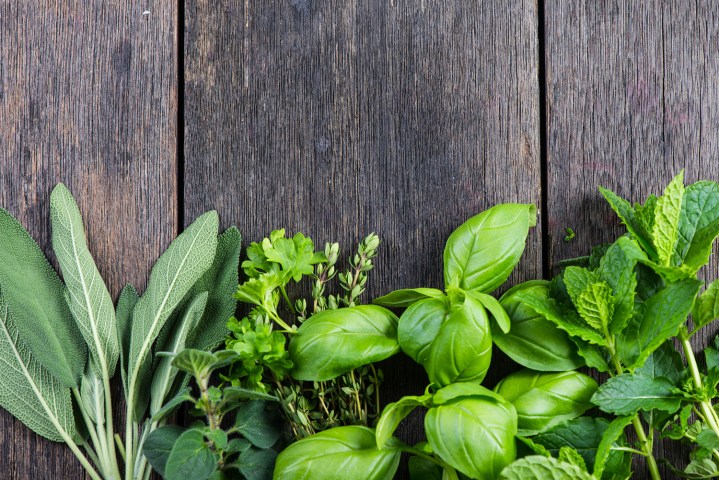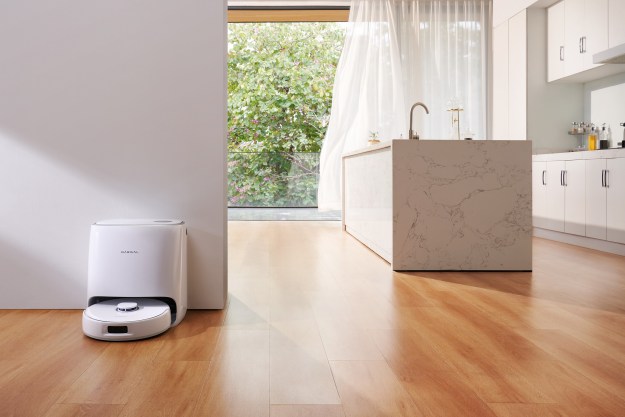
Pick your herb

Culinary herbs are a hearty bunch and most grow perfectly well inside. Still, you’ll need to make some decisions about which ones you want to keep on your windowsill. If your green thumb is a little discolored, you may want to start by trying to grow a batch of chives or mint. Both of these herbs are prolific growers and don’t require much light. In fact, if you’re not careful, you might find your kitchen overrun with mint. Mint grows like a weed — because it is a weed — and you need to make sure to trim it and keep it from invading your other plants.
Oregano, thyme, parsley, rosemary, and basil are all great options for adding fresh ingredients to your meals as well. While ideal growing conditions vary for these herbs — thyme needs a lot of sun, for instance, and rosemary needs less water — most have the ability to survive on a sunny windowsill with occasional watering.
Pick your spot

Indoor plants still need outdoor nutrients. The most important aspect of growing an indoor herb garden is finding a place with adequate sunlight. While mint grows in shady locations, herbs like oregano and thyme need six or more hours of sunlight per day. A big sunny windowsill in the kitchen is the ideal spot, giving you easy access to water and on-demand ingredients, though any sunny window will suffice.
For those residing in the Northern hemisphere, looking to the southwest works wonders in helping you locate the sunniest window in your home. If your home or apartment doesn’t get much natural light, it’s viable to grow hardy herbs such as mint and chives or you might want to look at getting a hydroponic garden like the Grasslamp or Foop. There are also all-in-one systems, like the Click & Grow, which have grow lights and sensors to take even more guesswork out of growing herbs.
Pick your pot

The most common way to kill a herb garden is to over water it. This happens for a few reasons. First, herbs don’t need much water. As a general rule, don’t water your plants unless they’re dry. Second, poor drainage (or no drainage at all) is a surefire way to kill your herb garden. It’s important to plant your herbs in containers which allow water to escape. Of course, good drainage also leads to ruined windowsills. Make sure to use a drain pan or saucer to keep dirty water from dripping over your window.
If you’re planting one herb per pot, it’s perfectly fine to use a pot as small as 6 inches in diameter. If you want to grow more than one herb in a single pot — side note: mint doesn’t play nicely with others — you’ll need a little extra space. A 10-inch pot should be big enough for three herbs.
Time to plant

Good potting soil is essential to a healthy herb garden. While it’s fine to take soil from your outdoor garden, it’s better to start fresh to avoid bringing in any outdoor pests or using soil that may have lead or other heavy metals. Fill your pots with soil until you have about 3 inches of room from the top. Since we’re going the easy route and using starter plants instead of seeds, all you have to do is dig a small hole for your herb and drop it in. Cover the roots with soil, give it an initial first watering, then place it in the window and wait for your first delivery of fresh, home-grown goodness.
Tips and tricks

Now that you’ve got your herb garden growing, here are some ways to keep it healthy.
Tip 1: Eat it — Your herb garden is your in-home grocery store, and it’s there to be used. Trimming and eating your plants is not only good for you, it’s also good for the plants.
Tip 2: Start small — You don’t need to plant every herb you get your hands on all at once. Start with a particularly hardy herb, like chives, before adding more finicky plants.
Tip 3: Rotate your pots — If your herb garden is only getting light from one window, you’ll probably need to rotate your plants about once a week.
Tip 4: Smarten up — There are boatloads of gardening apps, like Homegrown, that will guide you through the growing process, should you find yourself lost among the leaves.
Editors' Recommendations
- Ring Pan-Tilt Indoor Cam vs. Ring Stick Up Cam Pro: Which is better for your home?
- Cura can turn any corner of your home into a garden
- How to connect Alexa to your home speakers
- The best indoor herb gardens for 2021
- How to set up your Lenovo Smart Display


